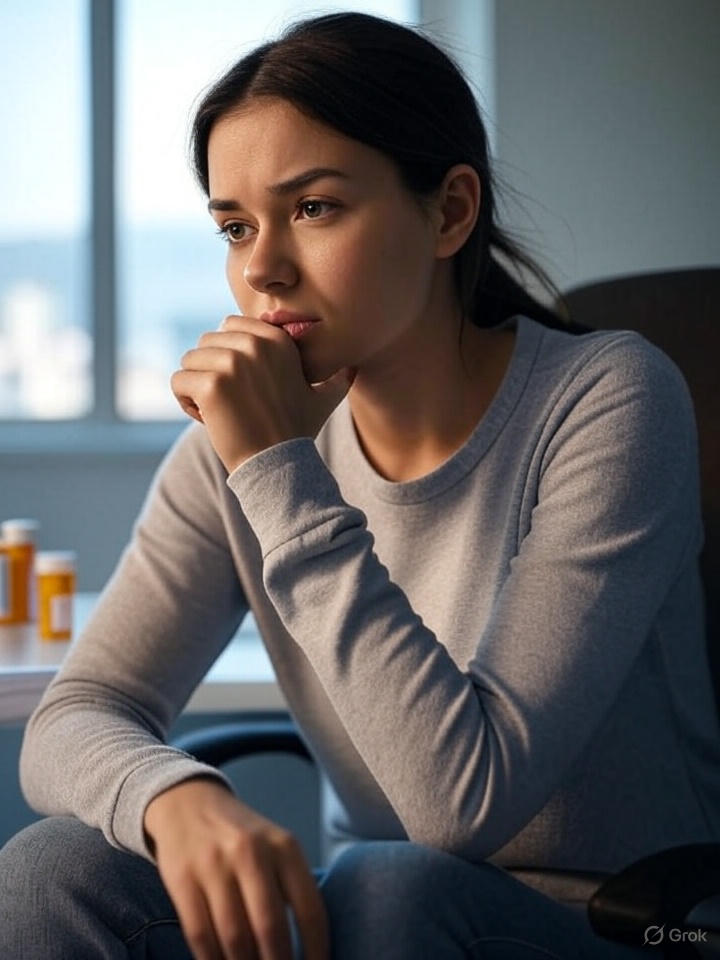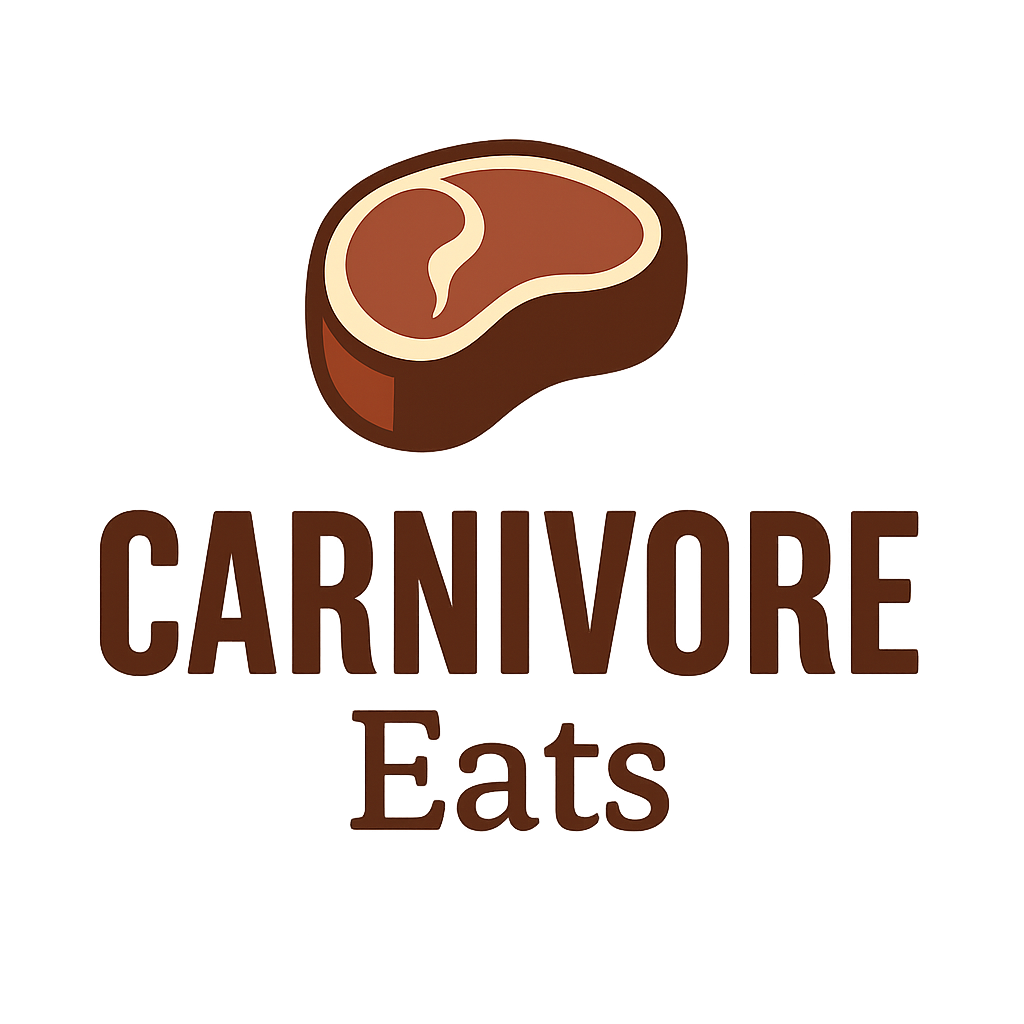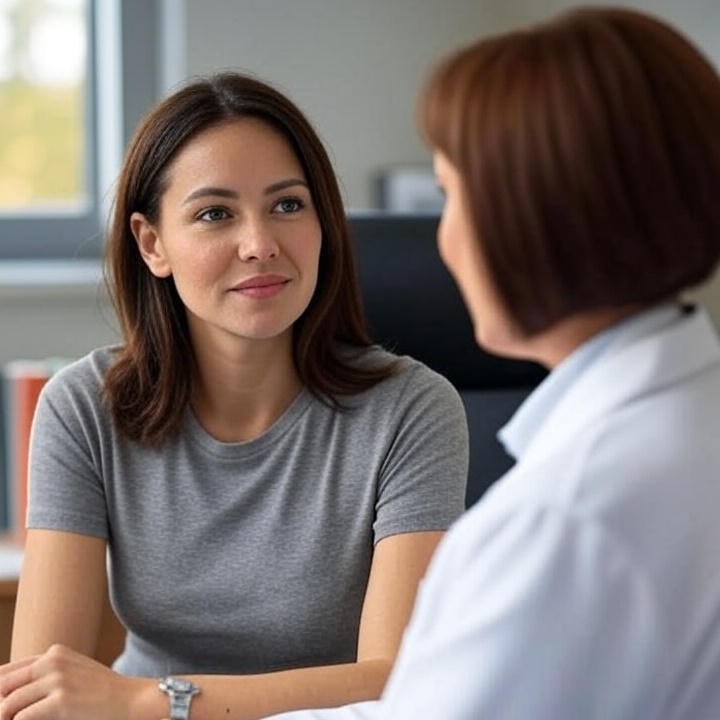Osteoporosis Options for Women 35+: Pharmaceuticals vs. Natural Paths to Strong Bones
Hey there, friend! If you’re a woman over 35, you’ve probably heard whispers about osteoporosis prevention and treatment—maybe from your doctor, a family member, or even a news article. It’s that sneaky condition where your bones lose density, making them more prone to fractures. As we age, especially post-menopause, our bones can start to weaken faster than we’d like. But here’s the good news: you have options to keep your bones strong, and I’m here to share the facts, the risks, and some practical tips to help you make informed choices. Let’s dive into the world of osteoporosis treatments—pharmaceuticals versus natural alternatives like AlgaeCal—and explore how to protect your bones at any age. I’ve done the research, so grab a cup of tea, and let’s talk bone health!
📖 Understanding Osteoporosis: Why It Matters for Women 35+
Osteoporosis is often called a “silent disease” because it creeps up without symptoms until a fracture happens—often in the hip, spine, or wrist. After age 35, bone breakdown starts to outpace bone building, and for women, this accelerates during menopause due to dropping estrogen levels, which help protect bones [1]. By age 65, one in four women in the U.S. has osteoporosis, and it’s even more common in non-Hispanic white and Asian women [2]. But don’t worry—whether you’re 35 or 65, there are steps you can take to slow bone loss and even build bone mass.
Your doctor might measure your bone density with a DEXA scan, giving you a T-score that compares your bones to a healthy 30-year-old woman’s. A T-score of -2.5 or lower means osteoporosis, while -1.0 to -2.5 indicates osteopenia (low bone mass) [3]. If you’re in this range, you might be offered medications, but let’s explore those—and alternatives—carefully.

💊 Osteoporosis Medications: The Pros and the Risks
Pharmaceuticals are a common go-to for osteoporosis treatment, and they can be effective at slowing bone loss or reducing fracture risk. But they come with side effects that deserve a close look. Here’s the scoop on the main classes of drugs, their benefits, and the risks you need to know.
Bisphosphonates (e.g., Alendronate/Fosamax, Zoledronic Acid/Reclast)
- What They Do: These drugs slow bone breakdown by inhibiting osteoclasts (cells that break down bone). Studies show alendronate can reduce hip and spine fracture risk by about 50% over three years, and zoledronic acid cuts spine fractures by 70% [4].
- Side Effects and Warnings:
- Osteonecrosis of the Jaw (ONJ): A rare but serious condition where jawbone tissue dies, occurring in less than 0.01% of osteoporosis patients but more common with high-dose IV bisphosphonates used for cancer [5]. A 2015 study linked long-term use (over 4 years) to higher ONJ risk [6].
- Atypical Femoral Fractures: Long-term use (over 3–5 years) may increase the risk of unusual thigh bone fractures, with a 2010 study reporting a small but significant risk [7].
- Esophagitis and GI Issues: Oral bisphosphonates can cause acid reflux or esophageal irritation if not taken properly (on an empty stomach, upright, with water) [8].
- Hypocalcemia: Low blood calcium levels can occur, though usually mild and correctable with supplements [9].
- Other Risks: Flu-like symptoms, bone/joint pain (in <5% of cases), and rare eye issues like uveitis (<1%) have been reported [9].
- Warnings: The FDA warns against long-term bisphosphonate use due to diminishing benefits and rising risks after 3–5 years [10]. A 2016 New York Times article noted that fear of these rare side effects led many women to stop bisphosphonates, halving their use from 2008 to 2012 [11].
Denosumab (Prolia)
- What It Does: A monoclonal antibody given as a twice-yearly injection, it blocks osteoclast formation, reducing spine fracture risk by 68% [12].
- Side Effects and Warnings:
- Increased Infection Risk: A 2010 study found a slight increase in serious infections, like skin infections, due to immune suppression [12].
- Rebound Bone Loss: Stopping denosumab can lead to rapid bone loss and increased fracture risk if not followed by another therapy [13].
- Hypocalcemia: More common than with bisphosphonates, especially in patients with kidney issues [14].
- Other: Muscle/joint pain, rashes, and cold-like symptoms are common [5].
- Warnings: The FDA issued a 2023 alert about severe hypocalcemia risks in dialysis patients taking Prolia [14].
Parathyroid Hormone Analogs (e.g., Teriparatide/Forteo, Abaloparatide/Tymlos)
- What They Do: These anabolic drugs stimulate bone formation, reducing spine fracture risk by 65% and other fractures by 53% [15].
- Side Effects and Warnings:
- Bone Pain and Dizziness: Common, along with injection-site reactions [15].
- Osteosarcoma Risk: High doses caused bone cancer in rats, though human risk is considered low [15].
- Limited Use: Restricted to 2 years due to waning benefits and safety concerns [15].
- Warnings: Not recommended for those with a history of bone cancer or radiation therapy [16].
Romosozumab (Evenity)
- What It Does: A monthly injection that blocks sclerostin to boost bone formation, reducing vertebral fracture risk by 73% in one year [17].
- Side Effects and Warnings:
- Cardiovascular Risk: A 2017 study linked it to a slightly higher risk of heart attack or stroke [18].
- Other: Joint pain, headaches, and injection-site reactions are common [18].
- Warnings: Limited to 12 months due to reduced efficacy over time [3].
Raloxifene (Evista)
- What It Does: A selective estrogen receptor modulator (SERM) that mimics estrogen’s bone-protecting effects, reducing vertebral fracture risk by 30–50% [19].
- Side Effects and Warnings:
- Blood Clots: Increases risk of deep-vein thrombosis, especially in women with heart disease [19].
- Hot Flashes and Muscle Pain: Common side effects [19].
- Warnings: Not suita
- ble for women with a history of blood clots [3].
Why Think Twice? These drugs can be lifesavers for women with severe osteoporosis, but the risks—especially with long-term use—make them worth questioning. A 2016 Harvard Health article warned that many women avoid bisphosphonates due to fear of rare but severe side effects, and studies suggest the benefits may not outweigh risks for those with milder bone loss [11]. Always talk to your doctor about your personal risk factors, like family history or prior fractures, before starting meds.
🌿 Natural Alternatives: Could AlgaeCal Be a Game-Changer?
If the side effects of pharmaceuticals make you pause, you’re not alone. Many women are turning to natural options like AlgaeCal, a plant-based calcium supplement derived from marine algae. Let’s explore what the science says about AlgaeCal and other non-drug approaches.
AlgaeCal: The Evidence
- What It Is: AlgaeCal provides bioavailable calcium, magnesium, vitamin D3, vitamin K2, and trace minerals, claiming to support bone health without the risks of pharmaceuticals [20].
- Studies Supporting AlgaeCal:
- A 2011 study in Nutrition Journal found that women taking AlgaeCal Plus and Strontium Boost for 12 months increased bone mineral density (BMD) by 2.8% at the spine and 2.3% at the hip, compared to a typical annual loss of 0.5–1% [21]. Link
- A 2016 study in Journal of the American College of Nutrition showed that AlgaeCal users gained 1.3% BMD over 7 years, while controls lost 7% [22]. Link
- These studies suggest AlgaeCal may not only prevent bone loss but also build bone, unlike bisphosphonates, which mainly slow resorption.
- Warnings and Limitations:
- Small Sample Sizes: The 2011 study had only 35 participants, and the 2016 study had 172, limiting generalizability [22].
- Strontium Use: Some AlgaeCal studies included strontium, which can inflate DEXA scan results, potentially exaggerating BMD gains [23].
- Cost: AlgaeCal is pricier than standard calcium supplements, which may be a barrier [23].
- Consult Your Doctor: High calcium intake from supplements (over 1,200 mg/day) may increase kidney stone risk, though dietary calcium is safer [24].
Other Natural Approaches
- Calcium and Vitamin D: Aim for 1,200 mg of dietary calcium daily (from foods like dairy, leafy greens, or fortified products) and 800 IU of vitamin D [25]. A 2010 meta-analysis found that calcium and vitamin D together reduce fracture risk by 8–15% [26].
- Weight-Bearing Exercise: Walking, yoga, or strength training for 30 minutes most days can boost BMD. A Johns Hopkins study showed stronger muscles correlate with better bone density [15].
- Sleep and Stress Management: Poor sleep is linked to lower bone stiffness, so aim for 7–9 hours nightly [31]. Stress-reducing practices like meditation may help balance hormones that affect bones.
- Limit Toxins: Smoking and excess alcohol accelerate bone loss, so quit smoking and keep alcohol to one drink daily [24].
Why Consider AlgaeCal? Unlike pharmaceuticals, AlgaeCal has no reported severe side effects, and its plant-based formula may be gentler on the body. However, it’s not a magic bullet—pair it with lifestyle changes for best results. Always check with your doctor, especially if you have kidney issues or take medications.
💡 Tips to Prevent Osteoporosis at Any Age
Whether you’re 35 or 65, these tips can help keep your bones strong naturally:
- Build Your Bone Bank Early: In your 30s and 40s, maximize bone mass with weight-bearing exercise and a nutrient-rich diet. A 10% increase in peak bone mass can cut fracture risk by 50% later [32].
- Eat for Your Bones: Focus on calcium-rich foods (kale, almonds, yogurt), vitamin D (salmon, eggs, sunlight), and magnesium (nuts, seeds). Avoid excessive caffeine, which can interfere with calcium absorption [24].
- Move Your Body: Try walking, dancing, or Pilates to stress your bones healthily. Balance exercises like tai chi reduce fall risk, critical for fracture prevention [27].
- Get Screened: If you’re over 50 or have risk factors (e.g., family history, low BMI), ask for a DEXA scan. Early detection lets you act before fractures occur [28].
- Check Hormones: Low estrogen, progesterone, or testosterone can accelerate bone loss. Talk to your doctor about testing and options like bioidentical hormone replacement if needed [30].
- Fall-Proof Your Home: Remove trip hazards, add grab bars in bathrooms, and use non-slip mats to prevent falls [29].
🤷♀️ Making the Choice That’s Right for You
So, what’s the best path for your bones? It depends on your situation. If you have severe osteoporosis or a recent fracture, pharmaceuticals might be necessary to prevent life-altering breaks—but discuss time limits and risks with your doctor. If your bone loss is mild or you’re focused on prevention, natural options like AlgaeCal, paired with diet and exercise, could be a safer bet. The 2016 AlgaeCal study’s 1.3% BMD gain over 7 years is promising, especially compared to the rare but scary risks of bisphosphonates like jaw necrosis [22].
My advice? Arm yourself with knowledge, get your bone density checked, and have an open conversation with your healthcare provider. Your bones are worth protecting, and you’ve got the power to make choices that keep you strong and active for years to come. Let’s keep this conversation going—share your thoughts or questions below!
References
- Cleveland Clinic. (2023). Osteoporosis Overview. https://my.clevelandclinic.org/health/diseases/4443-osteoporosis
- FDA. (2024). Osteoporosis. https://www.fda.gov/consumers/womens-health-topics/osteoporosis
- Harvard Health. (2024). Osteoporosis Drugs: Which One Is Right for You? https://www.health.harvard.edu
- Medscape. (2022). Osteoporosis Medication. https://emedicine.medscape.com/article/330598-medication
- Mayo Clinic. (2024). Osteoporosis Treatment. https://www.mayoclinic.org/diseases-conditions/osteoporosis/diagnosis-treatment/drc-20351974
- Lo, J. C., et al. (2015). Prevalence of Osteonecrosis of the Jaw in Patients with Oral Bisphosphonate Exposure. Journal of Oral and Maxillofacial Surgery. https://pubmed.ncbi.nlm.nih.gov/25577460/
- Shane, E., et al. (2010). Atypical Subtrochanteric and Diaphyseal Femoral Fractures. Journal of Bone and Mineral Research. https://pubmed.ncbi.nlm.nih.gov/20480159/
- NHS. (2021). Osteoporosis Treatment. https://www.nhs.uk/conditions/osteoporosis/treatment/
- Medical News Today. (2023). Safest Osteoporosis Drugs. https://www.medicalnewstoday.com/articles/safest-osteoporosis-drugs
- FDA. (2012). Bisphosphonates: Safety Communication. https://www.fda.gov/drugs/drug-safety-and-availability/fda-drug-safety-communication-update-safety-information-osteoporosis-drugs-bisphosphonates
- Harvard Health. (2016). Shunning Osteoporosis Treatment Isn’t Wise. https://www.health.harvard.edu/diseases-and-conditions/shunning-osteoporosis-treatment-isnt-a-wise-decision-for-most-women
- Cummings, S. R., et al. (2009). Denosumab for Prevention of Fractures. New England Journal of Medicine. https://www.nejm.org/doi/full/10.1056/NEJMoa0809493
- Bone, H. G., et al. (2017). Effects of Denosumab Discontinuation. Journal of Bone and Mineral Research. https://pubmed.ncbi.nlm.nih.gov/28144902/
- FDA. (2023). Prolia Hypocalcemia Risk. https://www.fda.gov/drugs/drug-safety-and-availability/fda-investigating-risk-severe-hypocalcemia-patients-dialysis-receiving-osteoporosis-medicine-prolia
- Johns Hopkins Medicine. (2022). Osteoporosis: What You Need to Know. https://www.hopkinsmedicine.org/health/conditions-and-diseases/osteoporosis
- WebMD. (2024). Osteoporosis Medications. https://www.webmd.com/osteoporosis/osteoporosis-medications
- Cosman, F., et al. (2016). Romosozumab Treatment in Postmenopausal Women. New England Journal of Medicine. https://www.nejm.org/doi/full/10.1056/NEJMoa1607948
- Saag, K. G., et al. (2017). Romosozumab or Alendronate for Fracture Prevention. New England Journal of Medicine. https://www.nejm.org/doi/full/10.1056/NEJMoa1708322
- Ettinger, B., et al. (1999). Reduction of Vertebral Fracture Risk in Postmenopausal Women with Raloxifene. JAMA. https://jamanetwork.com/journals/jama/fullarticle/190232
- AlgaeCal. (2017). How to Prevent Osteoporosis. https://www.algaecal.com/osteoporosis-treatment/prevent/
- Kaats, G. R., et al. (2011). A 12-Month Study on AlgaeCal. Nutrition Journal. https://nutritionj.biomedcentral.com/articles/10.1186/1475-2891-10-32
- Kaats, G. R., et al. (2016). Effects of AlgaeCal on BMD. Journal of the American College of Nutrition. https://www.tandfonline.com/doi/abs/10.1080/07315724.2015.1090357
- ConsumerLab. (2025). Osteoporosis Supplements. https://www.consumerlab.com/reviews/bone-supplements/osteoporosis-supplements/
- PMC. (2023). Osteoporosis: A Review of Treatment Options. https://pmc.ncbi.nlm.nih.gov/articles/PMC5335887/
- IOM. (2011). Dietary Reference Intakes for Calcium and Vitamin D. https://www.ncbi.nlm.nih.gov/books/NBK56070/
- Tang, B. M., et al. (2010). Use of Calcium or Calcium in Combination with Vitamin D. BMJ. https://www.bmj.com/content/339/bmj.b3692
- Yale Medicine. (2024). Worried About Osteoporosis? https://www.yalemedicine.org/news/osteoporosis-prevention
- USPSTF. (2018). Osteoporosis Screening. https://www.uspreventiveservicestaskforce.org/uspstf/recommendation/osteoporosis-screening
- NIA. (2022). Osteoporosis. https://www.nia.nih.gov/health/osteoporosis
- AlgaeCal. (2017). Causes of Osteoporosis. https://www.algaecal.com/osteoporosis-treatment/causes/
- NIH. (2023). Calcium and Bone Health. https://ods.od.nih.gov/factsheets/Calcium-HealthProfessional/
- Weaver, C. M., et al. (2016). Calcium Plus Vitamin D Supplementation and Bone Health. Osteoporosis International. https://pubmed.ncbi.nlm.nih.gov/26510847/
- Zhao, J. G., et al. (2017). Association Between Calcium or Vitamin D Supplementation and Fracture Incidence. JAMA. https://jamanetwork.com/journals/jama/fullarticle/2667071/

